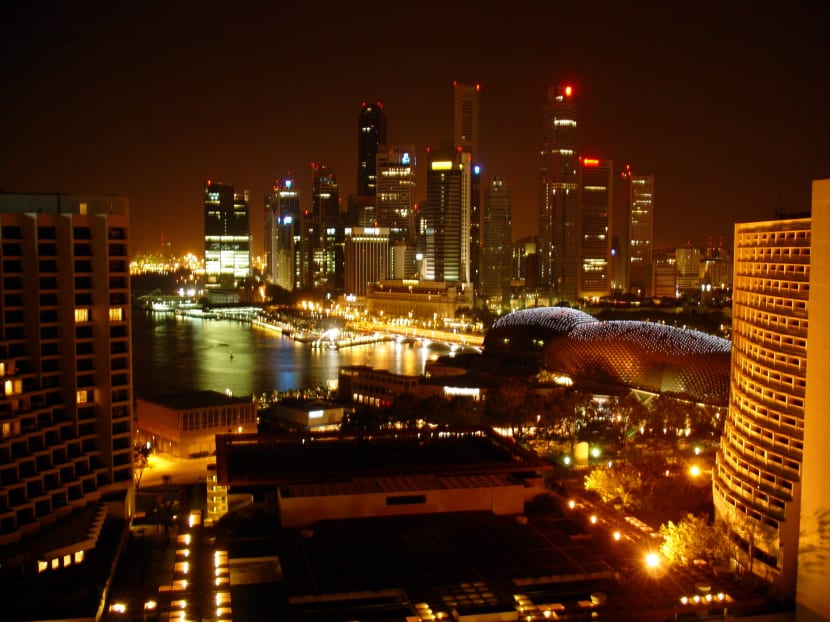Smart Nation drive to get speed boost with revamp
SINGAPORE — To speed up progress on nationwide digital projects launched under Singapore’s Smart Nation drive, the Government will reorganise various agencies to come under the Prime Minister’s Office (PMO), with the aim of delivering tangible results in the next two to three years.

Photo: www.freeimages.com
SINGAPORE — To speed up progress on nationwide digital projects launched under Singapore’s Smart Nation drive, the Government will reorganise various agencies to come under the Prime Minister’s Office (PMO), with the aim of delivering tangible results in the next two to three years.
From May 1, the Smart Nation Programme Office (SNPO), the Digital Government Directorate of the Ministry of Finance, and the Government Technology Policy department in the Ministry of Communications and Information (MCI) will fall under the new Smart Nation and Digital Government Office (SNDGO).
The 1,800-strong Government Technology Agency (GovTech), currently under the Ministry of Communications and Information, will also be placed under PMO, and be the implementing agency of SNDGO, which has a headcount of 40. This means that it will drive the Government’s IT systems and digital services.
Both GovTech and SNDGO will collectively form the Smart Nation and Digital Government Group under PMO. This new Group will be overseen by a Ministerial Committee comprising Deputy Prime Minister Teo Chee Hean, who will chair the Committee, and Minister for Communications and Information Dr Yaacob Ibrahim, who will be Deputy Chairman.
The others are Dr Vivian Balakrishnan, Minister-in-charge of the Smart Nation Programme; Minister for Education (Higher Education and Skills) Ong Ye Kung, who has been tasked to drive innovation in government; and Minister of State for Communications and Information Dr Janil Puthucheary, who will be the Minister-in-charge of GovTech.
The focus of this new Group: To “turbo charge” developments on three previously-announced “key foundational platforms” of setting up digital identity for all citizens, a common e-payments platform, and an Internet of Things and sensors system nationwide.
Speaking to reporters after a press briefing on the reorganisation on Monday (March 20), Mr Teo said: “In this way, we will be more coordinated to be able to move forward on key digital government programmes, as well as the key enablers for Smart Nation in the coming year or two.” He explained that many different agencies are involved, for the many areas under Smart Nation, such as the Digital Identity system, or e-payments.
“So it’s important that we bring together under PMO, the ability to pull together different agencies that will be involved in the implementation of some of these key enablers. If we do it centrally in PMO, we have a much greater ability to pull together these agencies in a synergistic way,” he added.
Dr Balakrishnan added: “What this new re-organisation does, is that it brings together the masterplanning, the policy, and the implementation, altogether under one roof, under the leadership of DPM Teo in PMO ... (it) will really allow us to turbo charge our efforts.”
The reorganisation follows comments made by Prime Minister Lee Hsien Loong last month at the annual Camp Sequoia tech summit that Singapore is “not moving as fast as we ought to” in the Smart Nation drive.
When Smart Nation was launched in 2014, building an islandwide network of sensors to collect information, such as environmental to transport data, to improve services was mooted. A GovTech spokesman said that a video analytics system is being developed as part of the platform, and is expected to be rolled out later this year.
Last March, GovTech called for a tender for a Mobile Digital ID system, which will uniquely identify every Internet user, like the NRIC, and can be used to authenticate online transactions with the Government or commercial entities. Trials are ongoing on the forms that this system could take.
For e-payments, a Central Addressing Scheme will soon be launched that will allow people to transfer money to one another using their mobile numbers, across participating banks.
Responding to queries, an SNPO spokesman said that since its inception, there have been some areas which have progressed well, such as mobility, digital government services, and connectivity infrastructure. For instance, the Land Transport Authority, in using data analytics, has managed to reduce crowdness on buses by 92 per cent, and shortened waiting times for popular services by three to seven minutes.
Analysts said the reorganisation would help make sure progress speeds up.
Mr Clement Teo, principal analyst at Ovum, pointed out the key driver for this move is to really increase the pace of change.
“To drive change, you have to ensure that everyone’s on board. This move has elevated GovTech to being more of a driver, in pushing change through a lot faster. In the past, it would have to seek buy-in from other ministries, which would have different priorities,” he said.
“Now, under PMO, it becomes more focused, there’s better clarity, and its priorities have been elevated.”






